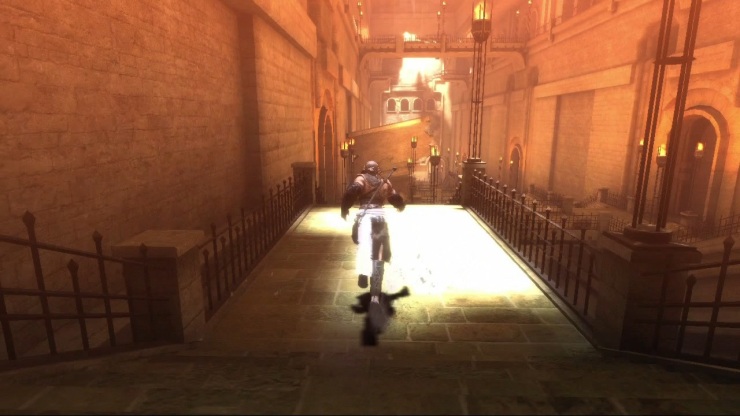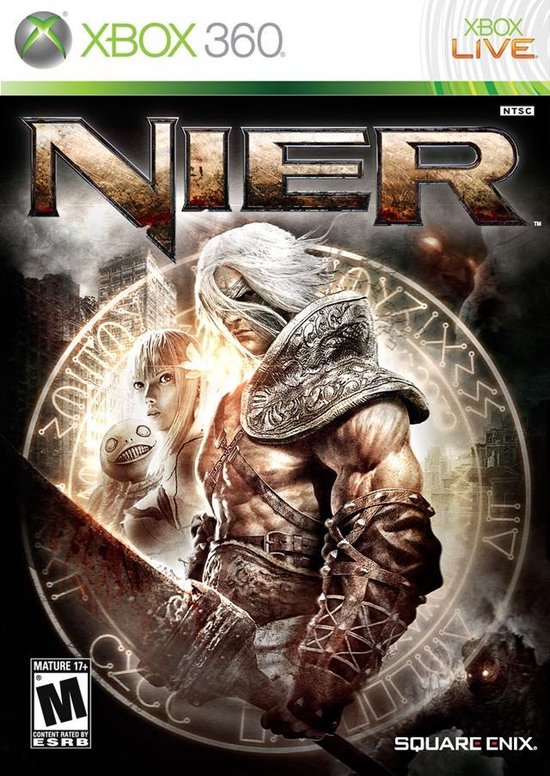
- NieR
- Publisher: Square Enix
- Developer: cavia inc.
- Director: Yoko Taro
- Platform: PlayStation 3, Xbox 360 (Reviewed on Xbox 360)
- Release Date: April 22, 2010 (JP/AU); April 23, 2010 (EU); April 27, 2010 (NA)
- AKA: NieR Gestalt (Xbox 360, JP), NieR Replicant (PS3, JP)
First of all, before we get to today’s article, I would like to express my intense dislike for WordPress’s wonderful new block editor. The old editor was simple, easy to use and had all the necessary features readily available, so naturally that had to be changed to this garbage. At least they still give you the option to use the old-style editor if you add the “Classic” block, but why change that in the first place when it wasn’t broken in the slightest? Even then, it’s still a complete pain in the ass to, say, add captions to images, and if I center a captioned image it doesn’t actually show up as centered in the fucking editor. Anyway, now that I’m done with my “Old man yells at cloud” tirade, let’s talk about a video game instead.
Once upon a time, there was a PlayStation 2 game named Drag-On Dragoon (no, really), which received the much less silly name of Drakengard outside Japan. Released in 2003 in Japan and early 2004 internationally, Drakengard was an action RPG that combined Dynasty Warriors-inspired hack and slash action with flying segments inspired by Ace Combat and bullet hell shooters, and served as the directorial debut of one Yoko Taro (whose name should technically be rendered as “Taro Yoko” in English, but uses the Japanese naming conventions even when written out in English – for the longest time, I thought Taro was his family name).

Yoko started out as a background designer at Namco in the late 90s and then moved on to Cavia, where he took on the director job for what would become Drakengard after the person originally penned in to direct was unable to take on the project. This is where the game’s tone took shape, as Yoko considered what kind of individuals would feel joy about killing hundreds of enemies. Thus, we ended up with a cast of characters that could charitably be described as utterly horrible people, doing horrible things in an equally horrible world. The main protagonist, Caim, is merely a violent and bloodthirsty psychopath, which makes him one of the more healthy individuals in the cast.
Not only is the cast a bunch of awful misfits and deviants of various types, but the repetitive gameplay could also be described as player-unfriendly at best (Drakengard revels in wasting your time in increasingly hostile ways throughout the game) and even the soundtrack is a dissonant mess that sounds like it’s attacking you. Drakengard does not want you to play it, and it most definitely doesn’t want you to complete it and earn all the endings (achieved by collecting all weapons in the game, which is easier said than done due to the aforementioned fact the game hates you).
NieR is a Drakengard spinoff/pseudo-sequel, set in same universe as Drakengard‘s final ending. In Ending E of Drakengard, Caim and his dragon “friend” Angelus went through a portal and ended up in modern-day Tokyo, where they defeated an untextured giant woman in a rhythm game battle in the skies above the city and promptly got shot down by the Japanese air force. The end, thanks for playing. No, I did not make up a single word of that. Apparently, all this weird magic business wasn’t ideal for Earth’s ecosystem or Earth in general (I could’ve sworn I read in some official materials or developer interviews that the entire planet was thrown off its axis somehow), and life as we know it was mostly eradicated.
The story of NieR begins in 2049, 46 years after Drakengard‘s Ending E. The Earth is, to put it mildly, completely screwed, as we can see when we join Nier and his sick daughter Yonah (or little sister if you play the Japanese-exclusive NieR Replicant version, which is currently being remade for modern systems and scheduled for a worldwide April 2021 release) in the desolate ruins of a city and they’re attacked by a horde of shadowy monsters known as Shades. Nier drives off the attackers with the power of a sapient magical book that seems quite interested in owning his soul, but this doesn’t seem to be enough as Yonah appears to succumb to her illness afterward. Immediately after this, the game jumps 1,312 years to the future, which is where the rest of the story takes place.
The ruined city, by the way, is slightly different based on your system region – if you’re in the US, you can see a building that resembles the Empire State Building in the background during one of the cutscenes. In the UK and most of Europe, it’s replaced by London’s Elizabeth Tower (aka the tower that houses the Big Ben), in Germany it’s some building in Berlin, in France it’s the Eiffel Tower, and in Japan it’s the Tokyo Tower. I just learned this after writing the article and thought it was too cool not to include.
NieR‘s setting is not post-apocalyptic by any means, that’s strictly limited to the tutorial. The apocalypse happened so long ago that all that remains of the old way of life are some ruined bridges and skyscrapers, as well as the occasional ancient human artifact whose purpose has long since been lost to time. Humanity has somehow survived and is now scattered across a variety of small towns and villages across the world.
The game begins proper in one of these villages, a nameless little hamlet that is home to… err… Nier and his sick daughter (or little sister) Yonah. That’s an odd coincidence. Now resembling an extremely buff love child of Gary Busey and Geralt of Rivia, Nier makes a living doing various odd jobs for the villagers, such as hunting for meat or dispatching the occasional Shade that has wandered too close to the village. All he wants is to help Yonah get better, but there doesn’t seem to be anything that can be done other than ease her pain somewhat.
While we never found out the exact nature of Yonah’s ailment in the intro, here we discover she’s infected with something called the Black Scrawl, which does exactly what the name suggests and appears to “write” black markings on the victim’s skin. The Black Scrawl is apparently what exterminated most of humanity in the first place, and it’s still going strong over a thousand years later with no cure in sight. That is, until Nier comes across Grimoire Weiss, a sapient magical book not unlike the one seen in the prologue (albeit less outwardly evil and sounding more like Alan Rickman than Albert Wesker), and learns about something known as the Sealed Verses.
Desperately looking for something, anything that might cure his daughter, Nier reckons these Verses might be able to save Yonah and sets out to find them all. As is always the case in Yoko Taro games, there are multiple endings and seeing the credits for the first time just means you’re barely getting started.
On their travels, Nier and Weiss encounter a couple of individuals that end up joining them on their quest. The first of these misfits is a strange woman named Kainé, whose choice of attire is somewhat unorthodox for fighting monsters but you don’t want to say that to her face because she’ll respond by cussing you out in a manner that would make hardened sailors blush around the ears. Hell, she does that as soon as you start the game, which is quite funny. Laura Bailey‘s Kainé voice is mostly identical to her Saints Row Boss voice, which is also pretty great.
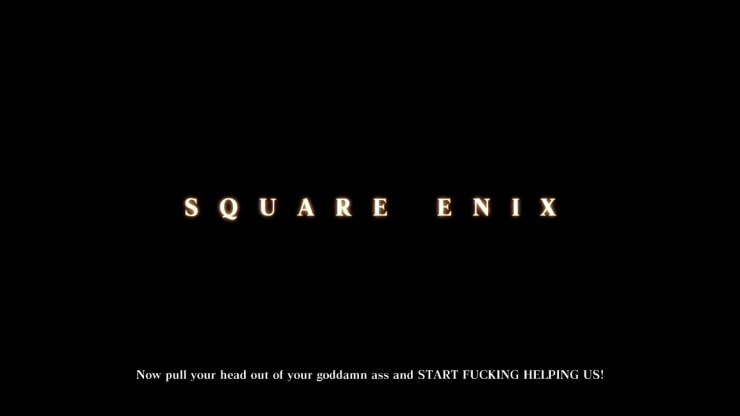
The final party member is a young boy named Emil, who starts out as a relatively normal kid that simply happens to have the power to turn people into stone by looking at them, and eventually becomes a skeleton wizard with what can only be described as an eternally grinning beach ball for a head. That’s not really a spoiler at this point, because you can see him on the box art and more importantly in NieR: Automata, and Yoko Taro always wears a mask of Emil’s head during public appearances. As a result of all this and his unforgettable appearance in general, Emil has sort of become the NieR series’ unofficial mascot.
Apparently, Yoko Taro originally decided to wear the mask at E3 because he wanted to look embarrassing enough on stage for Square Enix not to send him out there again, but this completely backfired because everyone loved it and the Emil mask is now generally considered to be Yoko Taro’s real face. I have no idea what he looks like without it, and don’t really need or want to know.

Gameplay-wise, NieR is mainly a Zelda-esque action adventure game with fairly light RPG elements. You run around various environments, kill enemies, solve simple puzzles, and complete quests for NPCs, that kind of thing. However, NieR also loves messing around with your expectations and can change genres on a whim. Over the course of a playthrough, the game will suddenly turn into an isometric dungeon crawler, a text adventure/visual novel, or even an extended Resident Evil homage, and then right back into a third person action adventure like nothing happened. The bullet hell shooter influence is still evident from the attack patterns of the bosses in particular. NieR doesn’t do any of these genres particularly well, but at least it always keeps you on your toes.
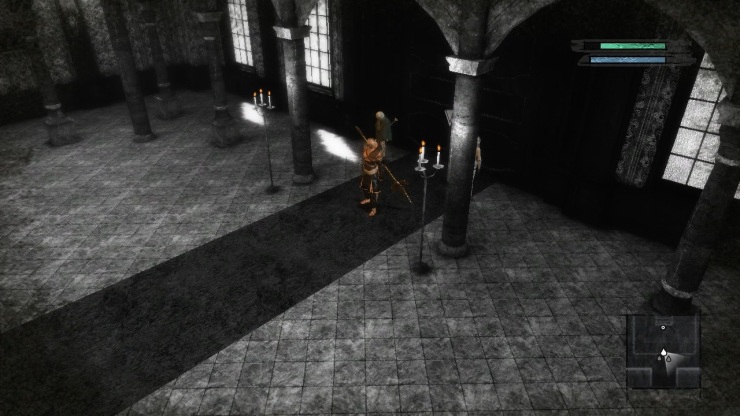
However, there are a few things NieR does extremely well. The first of these is the writing. NieR‘s narrative is not particularly subtle at expressing its themes, but it certainly is effective and… well, extremely sad at times. Yoko Taro set out to write a story about a tragic event in which both sides genuinely believe they’re doing the right thing, and to ask the question “How far would you go for the sake of someone you love?” Drakengard was all about terrible people doing unpleasant things, but NieR takes a very different approach with some truly heart-wrenching results.
NieR features a strong cast of characters, all of them memorable in their own ways, and spends the first half of the game building up your emotional connection with these characters and the world. When things inevitably start going south, the game does an excellent job making you care about what’s going on. Kainé and Emil just might be my favorite JRPG party members of all time, and they’re most definitely not the only well-written people in NieR.
NieR‘s other strong point is the absolutely phenomenal soundtrack by Keiichi Okabe, Kakeru Ishihama, Keigo Hoashi and Takafumi Nishimura, with vocal performances by Emi Evans. I have heard quite a few people say NieR has their favorite video game soundtrack of all time or at least one of their favorites, and I can’t say I disagree. The whole thing is on Spotify and presumably other similar services as well, and you should go listen to it right now.
Cavia was never a particularly well-regarded development studio, mainly working on a variety of licensed crap in their ten years in business. NieR was their final game, and generally considered the best by a large margin. That’s not necessarily saying much, because you can still tell this is a rather low-budget affair and the game definitely suffers from various issues on the gameplay front.

The basic combat works well enough for the most part – X (or Square on the PS3) is your main attack button and you can perform short combos with it, Y is used for special attacks like the spear weapons’ dash charge and can finish a combo. The left trigger blocks, the right trigger evades. Fairly basic stuff. Sadly, the dodge doesn’t seem to have any invincibility frames, and it’s quite easy to get stunlocked by enemy attacks because there are also no i-frames when Nier gets hit by something. The knockback is rather ridiculous as well, even when you get hit by the smallest enemies.
Each Sealed Verse you find unlocks a new magic spell, some of which are extremely useful for ranged attacking or crowd control and others are… well, quite useless in general, to be frank. For example, being able to absorb projectiles sounds good until you remember you can block or destroy said projectiles without having to spend any MP whatsoever. The ranged Dark Lance attack is one of your most useful Verses, but aiming it is rather annoying because the aim reticle moves in increments of “none whatsoever” and “too much”. Still, you have plenty of options in combat, which is very much appreciated and many of these spells would show up again in NieR: Automata as Pod Programs.

Speaking of Automata, the plug-in chips you can use to augment your android’s abilities were introduced here in the original NieR as words you’d attach to weapons or spells. For example, if you want to improve Nier’s Beastlord two-hander, you can add the words “Big” and “Ass” to create the Big Ass Beastlord of +20% damage and +15% EXP. Well, the actual in-game words are in a made-up language, but you get the idea.
This is a bit cumbersome because you have to repeat the process for every weapon or spell you want to augment, and different words also have different effects based on what you put them on. I prefer Automata‘s more streamlined system where you just have a certain number of slots for your augmentations and need to optimize your plug-ins to fit as many of them in there as possible, but the original system still works decently enough.
In the first half of the game, Nier is only able to use one-handed swords, but as the game progresses he gains access to the aforementioned two-handers and spears. As is tradition in these games, there are enough weapons in NieR to mount a small-scale armed coup. Most are either bought at blacksmiths or found in dungeons, but a few can only be obtained as sidequest rewards. Most weapons in the game are various degrees of garbage, but you once again need all of them to access the true ending.
The sidequests in NieR largely range from passable to utter dreck, with a couple of good ones and particularly terrible ones included in the mix. Entirely too many sidequests require grinding for rare materials and copious backtracking (or, worst of all, gardening, which involves waiting 18 hours for plants to grow… or just moving the system clock forward if you’re not a crazy person), but thankfully most of those aren’t required for the weapon unlocks and usually you just earn a bit of cash for your trouble.
As such, there’s no real penalty for skipping most sidequests, and for the sake of your sanity I highly recommend only doing the ones that aren’t grindy nightmares. Cavia might not hate you, the player, quite as much as they did back in 2003, but they definitely don’t like completionists.
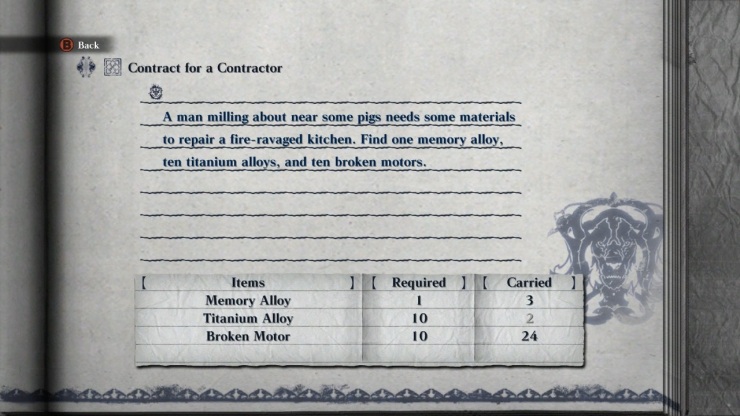
As I mentioned earlier, NieR very much has the feel of a budget game to it. While the writing and music are fantastic and the combat mechanics are solid enough, the visuals mostly resemble an upscaled PlayStation 2 game (although the art direction is very solid and almost reminds me of Team Ico games at certain points) and the game world simply isn’t very large. There are only three actual towns in the game, only a handful of dungeons which are all rather bare-bones, and you have to backtrack through areas quite a few times. Fast travel is unlocked in the second half of the game in the form of boats you can take to different locations, but there’s still plenty of running around and seeing the same places over and over again. As a result of all this, the review scores NieR received back in 2010 were rather mediocre despite most reviewers deservedly praising the writing and the soundtrack.
There was one infamous instance of a reviewer completely failing to figure out what to do next and refusing to review NieR as a result, deeming it impossible to complete. At one point early in the game, you’re told to catch a shaman fish due to its medicinal properties. An old fisherman gives you a fishing rod and tells you the shaman fish can be caught at “the beach”. There is a small beach next to him, so the reviewer assumed this was where you were meant to catch the shaman fish, but it’s not.
Instead, the shaman fish can be found by fishing on a different beach, and the reviewer completely ignored the giant red X on the minimap that always points you to the next story objective. Admittedly, the game doesn’t do a great job with the signposting here, but most sensible people would maybe try the wrong spot a couple of times and then go check out the big red X on the map, instead of declaring the game impossible to beat. But hey, what do I know? I don’t get paid for writing about video games.
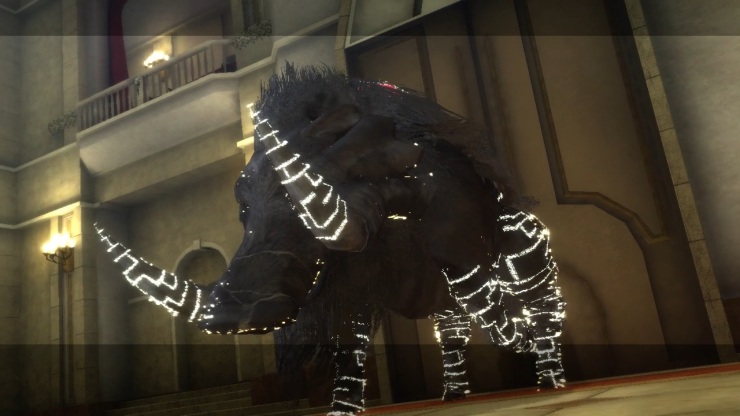
Along with mediocre reviews and that one non-review, NieR also met with poor sales. 2010 was a year full of big-name releases such as Red Dead Redemption, Mass Effect 2, Fallout: New Vegas and, of course, Square Enix’s own Final Fantasy XIII. Now, I’ll go out on a limb and assume that if you only bought one Square Enix game in 2010, it probably was the long-awaited latest installment in S-E’s flagship series instead of the pseudo-sequel to Drakengard. I know which game I’d rather play now, but back in 2010 I was aboard the Final Fantasy train and didn’t touch NieR until playing through NieR: Automata a couple of months ago and falling in love with it.
Despite the poor sales numbers, NieR gained plenty of positive word-of-mouth and became a cult classic, eventually leading to a 2017 sequel developed by a competent studio on an actual budget (to be honest, Yoko Taro being drinking buddies with several very important people at Square Enix probably helped facilitate this a lot more than NieR‘s cult classic status). As you probably know, NieR: Automata received widespread critical acclaim and sold far beyond expectations, and now we somehow find ourselves in a situation where a remake of the original NieR is one of Square Enix’s biggest releases scheduled for 2021. It’s strange how these things work out sometimes.
So, should you play NieR in 2020? Well, if you still have a PS3 or Xbox 360 (no backwards compatibility on Xbox One, sadly) lying around and can’t wait for the Replicant remake or simply want to experience the Dad Nier story in its original form, the game isn’t too expensive to buy these days. Or at least the PAL version isn’t, I’m not sure about the North American release.
You may want to have a guide handy if you’re planning to do the sidequests, and you’ll definitely need some patience because the backtracking does get old, but if you can look past the rough edges you’ll find an absolute gem of a game that is very much worth experiencing. There certainly are plenty of games that look and play better, including NieR: Automata, but even then there is nothing quite like the original NieR.
UPDATE (November 2021): The Xbox 360 version of NieR can now be played on Xbox One and Xbox Series consoles and a digital version is finally available on the Xbox Store! While there is no visual upgrade, the game at least now supports the FPS Boost feature and runs at 60 frames per second on the new consoles. I still haven’t gotten around to playing the Replicant remake despite buying it months ago, but having both the Replicant and Gestalt versions of NieR playable at 60 fps on my Series X is very welcome indeed. If this genuinely ends up being the last batch of Xbox backcompat titles (according to Microsoft, adding more games to the program would involve a variety of legal and technical hurdles, so this is meant to be the final batch as of this writing), it is at least a hell of a way to sign off.










